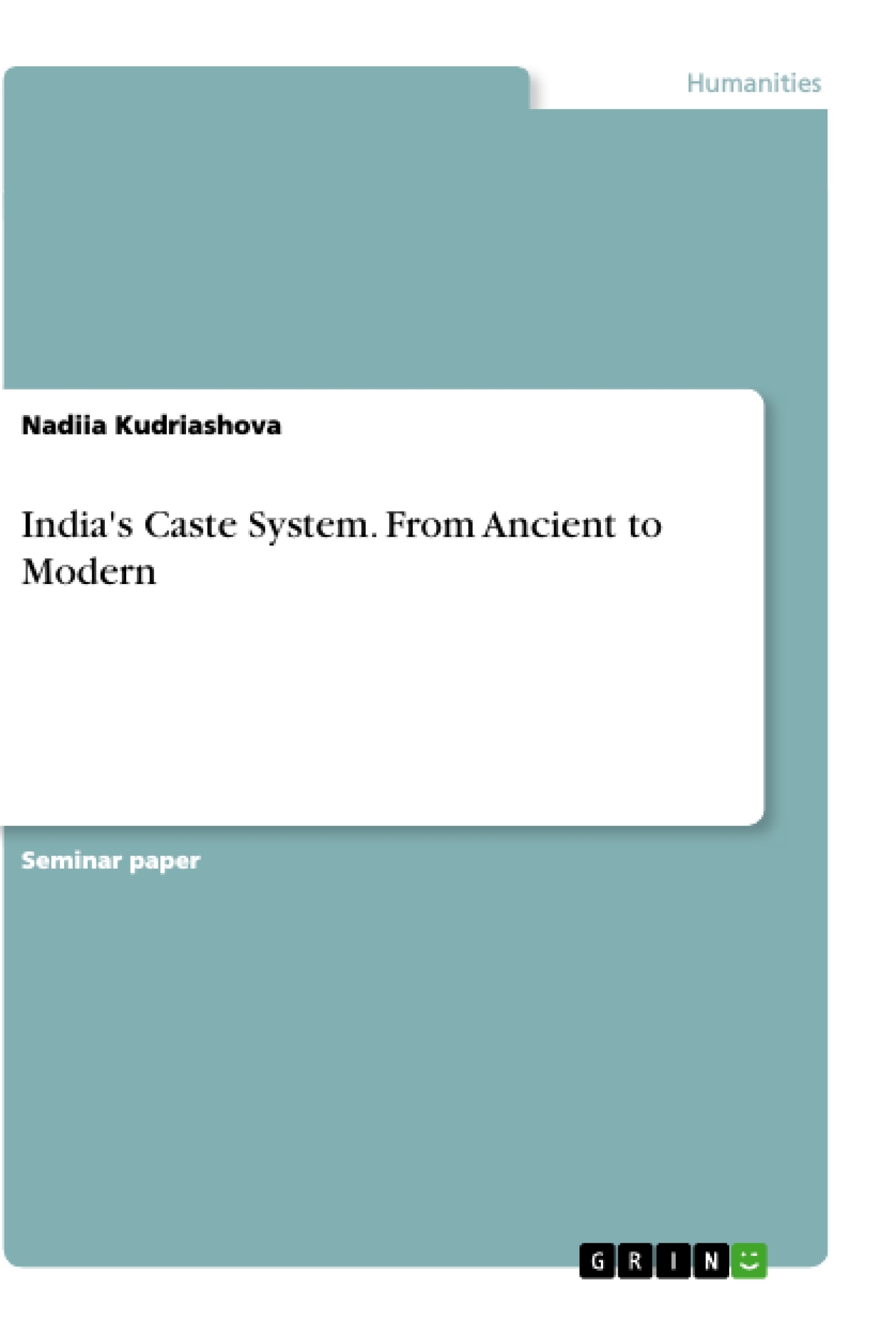This paper analyses India's caste system from Ancient to modern. During the 20th and the beginning of the 21st centuries, many countries of the East developed along the path of modernization of social, political, and socio-economic life. In some states, this process was interrupted by social explosions, which led to a rollback to the past. Others appeared capable of finding a viable balance between traditional and modern values. In both cases, specific political systems emerged, which are characterized by the coexistence of Western democratic principles and traditional social institutions. Thus, in India, on the one hand, the involvement of the caste in political life led to some transformation of this ancient social structure and retained its position in modern society; on the other, it created such a phenomenon as "democracy of the castes".
Castes/jati are formed on the basis of a related self-organization; they have a different origin, but most of them go back to archaic tribes and tribal fragments; they are characterized by endogamy, hereditary profession, originality of culture. Ideological substantiations of the caste mode of communication are directly related to the fundamental concepts of Hinduism, dharma, karma, and sansara, which describe Indian ideas about the laws of the existence of the Universe and nature.
Modern Indian society is distinguished by its phenomenal mosaic composition. Numerous and diverse linguistic, ethnic, confessional, caste groups not only coexist, but they are intertwined in the fabric of a social organism. Indians' identity is usually vague; its different variants come to the fore in different contexts; they overlap and complement each other. Entire communities do not have an unambiguous scientific nomination.
Table of Contents
- Introduction
- Castes/Jati in Modern Indian Society
- The Indian Caste System: Resilience and Adaptation
- The Phenomenon of "Untouchability" and its Global Significance
- The Historical Roots of the Varna-Caste System
- The British Colonial Era and the Caste System
Objectives and Key Themes
This text delves into the historical origins, evolution, and enduring impact of the caste system in India, exploring its role in shaping social, economic, and political structures. It analyzes the complexities of caste-based divisions, their impact on various social groups, and the ongoing struggle for equality and social justice.
- The Historical Evolution of the Caste System
- The Socio-Economic and Cultural Significance of Caste
- The Persistence of Caste in Modern India
- The Challenges of Integration and Social Change
- The Global Implications of "Untouchability"
Chapter Summaries
- Introduction: This chapter introduces the topic of caste in India and its relevance in the context of modernization and social change in the East. It discusses the coexistence of traditional institutions with modern democratic principles and the resulting "democracy of the castes."
- Castes/Jati in Modern Indian Society: This chapter examines the characteristics of castes, their origins, and their deep roots in Hindu ideology and concepts like Dharma, Karma, and Samsara. It also highlights the diverse and complex mosaic of social groups in modern India, with caste being a dominant factor in social organization.
- The Indian Caste System: Resilience and Adaptation: This chapter explores the resilience and adaptive nature of the caste system in India, examining its historical endurance and its ability to adjust to changing social, economic, and political realities. It emphasizes the discriminatory norms embedded within the system and the consequences of social exclusion.
- The Phenomenon of "Untouchability" and its Global Significance: This chapter discusses the "untouchables" or "Dalits" and their marginalization within the caste system. It argues that the concept of "untouchability" transcends local history and has global implications in the context of globalized economic structures and divisions of labor.
- The Historical Roots of the Varna-Caste System: This chapter traces the origins of the Varna-caste system back to the Indo-Aryan invasion of northern India in the 2nd millennium BC. It examines the emergence of closed social groups of conquerors and the subsequent formation of the Varna hierarchy based on ritual purity and endogamy.
- The British Colonial Era and the Caste System: This chapter analyzes the impact of British colonialism on the Hindu castes and the relations between them. It discusses the implementation of formal equality in employment and the unintended consequences of introducing English education, which ultimately benefited certain castes more than others.
Keywords
This text focuses on key concepts like caste, jati, varna, untouchability, Dalits, Hinduism, Dharma, Karma, Samsara, social exclusion, discrimination, social reproduction, modernization, and the historical and global implications of the caste system in India.
- Quote paper
- Nadiia Kudriashova (Author), 2017, India's Caste System. From Ancient to Modern, Munich, GRIN Verlag, https://www.grin.com/document/500552




